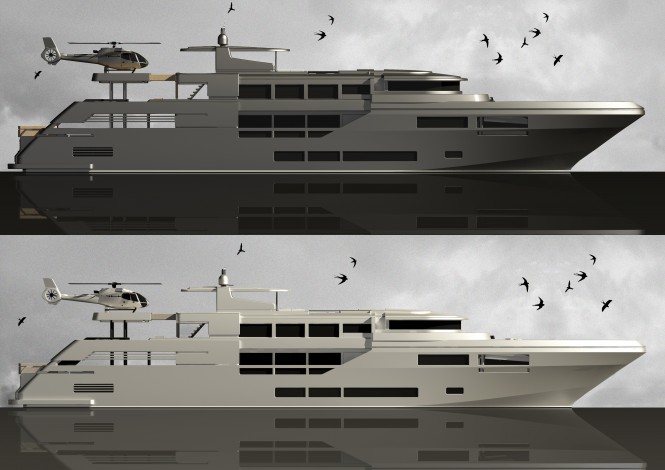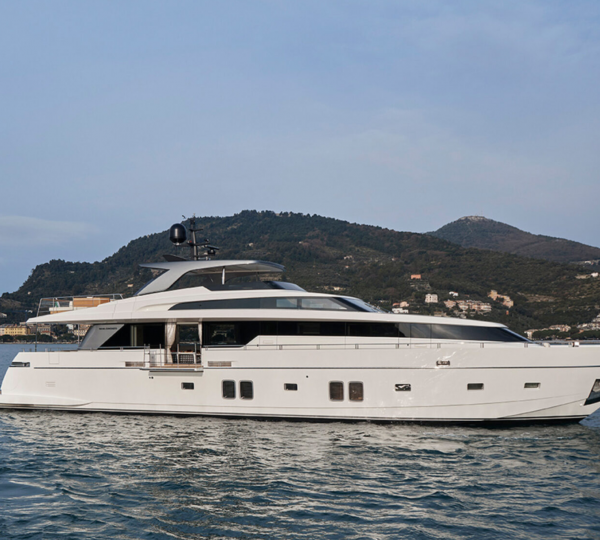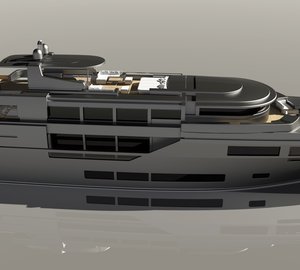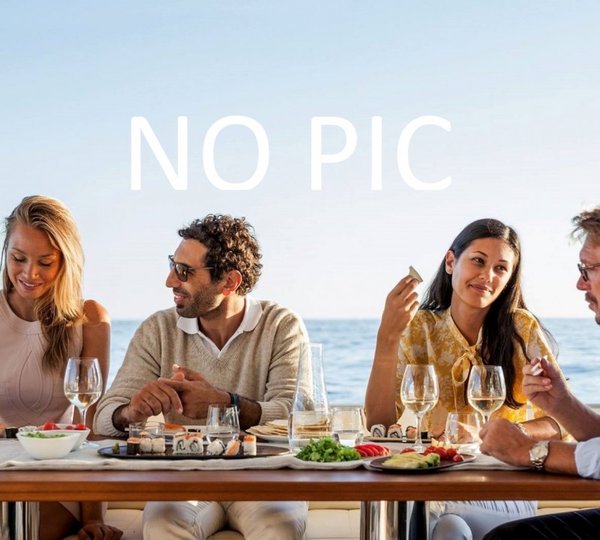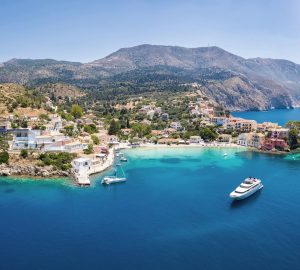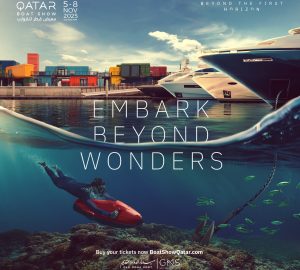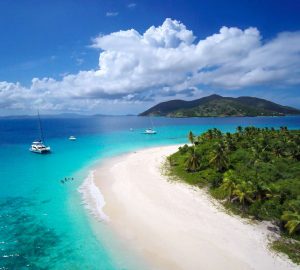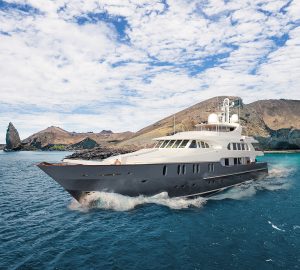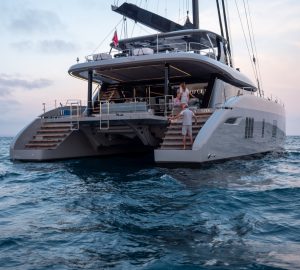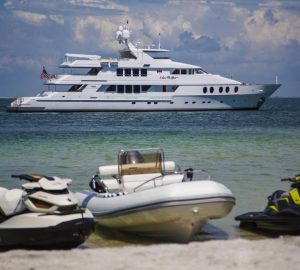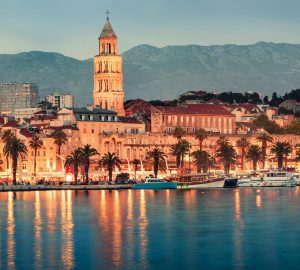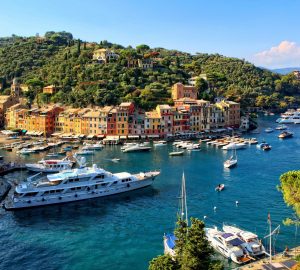Following the great success of the 40m as well as the 46m Discovery superyachts, the 54m motor yacht Discovery, developed by the Italian designer Bernardo Zuccon provides futher confirmation of research led over the years into the relationship between architecture and boating.
While maintaining a number of basic approaches to linguistic development in which the architectonic archetype of the beam and pillar are dominant stylistic motifs while at the same time serving as the project’s material consistency and image, the typological principle has been supplemented with new content in terms of layout and functions offering owners new ways of enjoying the 54m superyacht Discovery.
The theme of the relationship between artificial and natural materials, that is, between nature and architecture, historically an essential component of definition of an architectural construction, has come back. Identity, liveability, flexibility and modularity are definitely the aspects which contributed the most to the Discovery superyacht.
A vessel must be recognisable, the image of an ideal concept of a unicum permitting the owners to fall in love with this exclusive ‘creature’ all their own, interpreting it as a concrete response to all kinds of different personal needs; it must ensure comfort and great liveability and must, above all, be easy to use: a boat is not meant to be a showpiece but a space to be lived in day by day, and as such it must make life as easy as possible for the people living in it.
This ought to be the moral duty of every architect designing a boat. Starting out in the conviction that flexible living is a key aspect of interpretation of space, the approach to defining the compartmentalisation of this boat focused on the possibility of freeing the surfaces of superstructures from the limitation of fixed furnishings in order to permit optimal exploitation of their potential function as ‘non-surfaces’ visually bringing people closer to the sea.
A boat must be a flexible system, the theatre of changes reflecting the needs of the people using it. And this is one of the keys to the designers’ profession: the ability to design a product that can be adapted to the owner’s ‘measurements’, like a tailored suit, without forgetting that it is the complex result of a synthesis of the handmade and the industrial, of customisation and mass production.
Any boat, no matter what its size, must necessarily be designed as a component in a system that can maintain the same characteristics, stylemes and content even while changing its length, width and volumetrics, clearly measured and proportioned on the basis of the fittings that a boat of a certain size is clearly expected to have. In this sense the 54m luxury yacht Discovery is not an isolated case, but could potentially become a whole line, designed in different sizes while still offering the same features, as demonstrated by the MY 40 and 46.
The ‘green’ theme on board the Discovery yacht will definitely be a very stimulating aspect offering potential new scenarios; natural elements such as little greenhouses and green walls will help offer new sources of inspiration for experiencing the space supported the image of nature, which has always represented an ideal of wellness which will without a doubt help optimise comfort and quality of life onboard.
New spaces and new functions will offer owners and guests an opportunity to differentiate their time onboard and experience it in different ways. In this regard, another essential aspect will be onboard flows.
The 54m M/Y Discovery will be set up to offer real specialisation in management of space, dividing up spaces on the basis of different flows in different parts of the vessel, ensuring that the movements of the crew do not overlap with those of the owners and guests.
Fitted outdoor spaces will be of strategic importance on the vessel, and there will be more of them than on most yachts of this size, demonstrating a clear preference for outdoor life rather than staying indoors.
In short, the superyacht Discovery represents a new step in the process of research and analysis of content defining the concept of living in the broadest sense, in which human beings and their relationship with space in everyday life become key elements in determining functional and distributive properties. Stylemes and vocabularies must produce a recognisable image, a balanced volumetric ratio between the hull and the superstructure and internal stylistic solutions reflecting the identity of the ‘rulers’ of the vessel and meeting all their needs.
The product will be sensitive to the new scenarios offered by technological experimentation, new materials offering new suggestions but never losing sight of the essential bond with the nature of the sea. The sea will always be the one thing that never changes, and the human relationship with it and its specific features will always be the key for all designers. The modus operandi will offer new content in every case, but awareness of the ‘Place’ where the vessel is located can never be neglected. At least not until there are boats that can fly!

